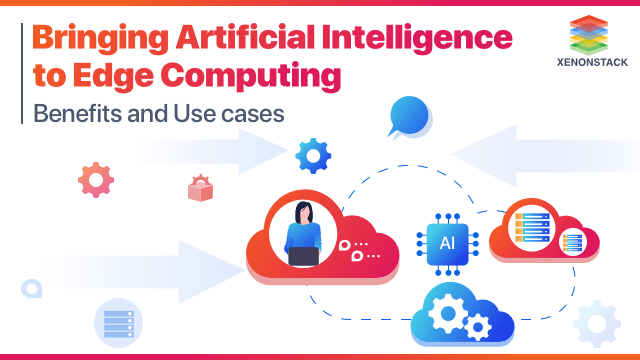
Empowering Intelligence: Edge Computing with AI
In the ever-evolving landscape of technology, the convergence of Edge Computing and Artificial Intelligence (AI) is reshaping how data is processed, analyzed, and utilized. This article explores the synergies and transformative impact of Edge Computing with AI, delving into applications, benefits, and the future trajectory of this powerful combination.
To explore the latest in Edge Computing with AI, visit www.misuperweb.net. This platform serves as a hub for staying informed about cutting-edge technologies and their transformative impact on edge computing and artificial intelligence.
Defining Edge Computing with AI
Edge Computing with AI refers to the paradigm of processing data closer to the source, or “edge,” rather than relying solely on centralized cloud servers. This approach leverages AI algorithms at the edge devices, enabling real-time data analysis, faster decision-making, and reduced latency. The integration of AI enhances the capabilities of edge computing, providing more intelligent and context-aware insights.
Applications Across Industries
The applications of Edge Computing with AI are diverse and span across various industries. In healthcare, edge devices equipped with AI can process patient data in real-time, facilitating timely diagnostics and treatment recommendations. In manufacturing, edge AI optimizes production processes by analyzing sensor data locally, minimizing delays and improving efficiency. These applications showcase the versatility of this integrated approach.
Enhancing Real-time Decision-Making
One of the key advantages of Edge Computing with AI is its ability to enhance real-time decision-making. By processing data locally at the edge, AI algorithms can rapidly analyze information and make decisions without the latency associated with sending data to centralized servers. This is particularly crucial in scenarios where immediate responses are essential, such as autonomous vehicles, smart cities, and critical infrastructure.
Reducing Latency and Improving Efficiency
Latency is a critical factor in many applications, and Edge Computing with AI addresses this challenge effectively. By processing data locally, the need to transmit large volumes of data to distant cloud servers is minimized, reducing latency and improving overall system efficiency. This is especially beneficial in applications requiring rapid response times, such as IoT devices and augmented reality experiences.
Optimizing Bandwidth Usage
Edge Computing with AI optimizes bandwidth usage by filtering and processing data at the edge before transmitting only relevant information to the cloud. This not only conserves bandwidth but also reduces the load on central servers. In scenarios with limited network connectivity or bandwidth constraints, this approach proves invaluable in maintaining efficient and responsive systems.
Security and Privacy Considerations
While the benefits are evident, the integration of Edge Computing with AI raises security and privacy considerations. As data is processed closer to the source, ensuring robust security measures at the edge becomes crucial. Encryption, secure protocols, and authentication mechanisms are essential components to safeguard sensitive information and maintain user privacy.
The Evolution of AI at the Edge
The evolution of AI at the edge involves the development of more sophisticated algorithms tailored for edge devices. These algorithms must balance the need for accuracy with the constraints of edge computing resources. Ongoing advancements in AI models, edge hardware, and federated learning techniques contribute to the continuous improvement of AI capabilities at the edge.
Scalability and Integration Challenges
While the potential is vast, scalability and integration challenges exist in deploying Edge Computing with AI at scale. Ensuring seamless integration with existing infrastructure, addressing interoperability issues, and managing the complexity of distributed edge environments require strategic planning. Overcoming these challenges is essential for unlocking the full potential of this integrated approach.
Future Trends and Innovations
Looking ahead, the future of Edge Computing with AI holds exciting possibilities. Anticipated trends include the development of more specialized AI chips for edge devices, the proliferation of AI-powered edge applications, and increased collaboration between edge computing and 5G networks. These trends will likely shape the next phase of intelligent and connected edge systems.
Conclusion: The Intelligent Edge Era
In conclusion, the marriage of Edge Computing with AI heralds the era of the Intelligent Edge. The ability to process data locally, make intelligent decisions in real-time, and optimize bandwidth usage opens new frontiers for innovation. As industries embrace this integrated approach, staying informed about the latest developments and trends becomes imperative. Edge Computing with AI is not just a technological advancement; it’s a transformative force that empowers intelligence at the edge of the network.
